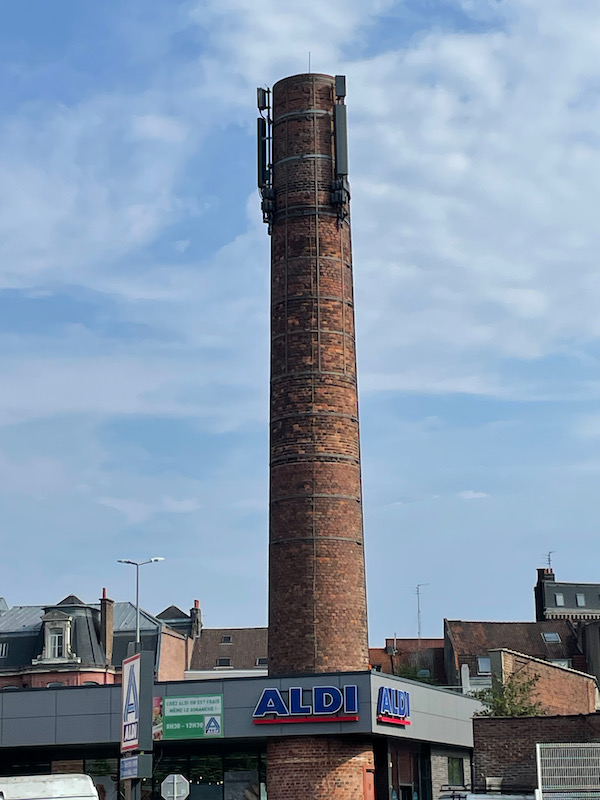Our Blog - Summer 2024 Trip - Roubaix, France
We had visited Roubaix before, during a visit to Lille, but only to go to a former swimming pool-turned-art museum. This time, we did a small walking tour. It is 11 km from Lille and is considered part of the Lille metropole (so it is an outer suburb). While it is in France, it sits right on the Belgian border. Unfortunately, With 43% of the population living below the poverty rate, it is one of the poorest cities in France (and it somewhat shows). From the 19th century until the middle of the 20th century, Roubaix was a world capital of textiles and housed the wool exchange. It contained lots of factories and was even called "the city of a thousand chimneys". Unfortunately, only a few of these chimneys remain.
It was occupied by the Germans during both World War I and World War II. There was a general urban decline starting in the 1970's due to the deindustrialization of the textile industry. Now, it is mostly thought of as a somewhat run-down suburb of Lille.
The Saint-Martin church is the oldest in the city with origins that can be dated back to the 9th century (around 881-887). Nothing remains of the original Romanesque building, and it was rebuilt from 1468 to 1571. Most of this building is also gone due to a reconstruction from 1848-1859. The facade tower, from the 16th century, is surrounded by two portals with neo-Gothic decoration. Likewise, the south facade has a monumental portal surmounted by three strongly distinctive pinnacles, in neo-Gothic style. It was closed while we were there, so only outside pictures.
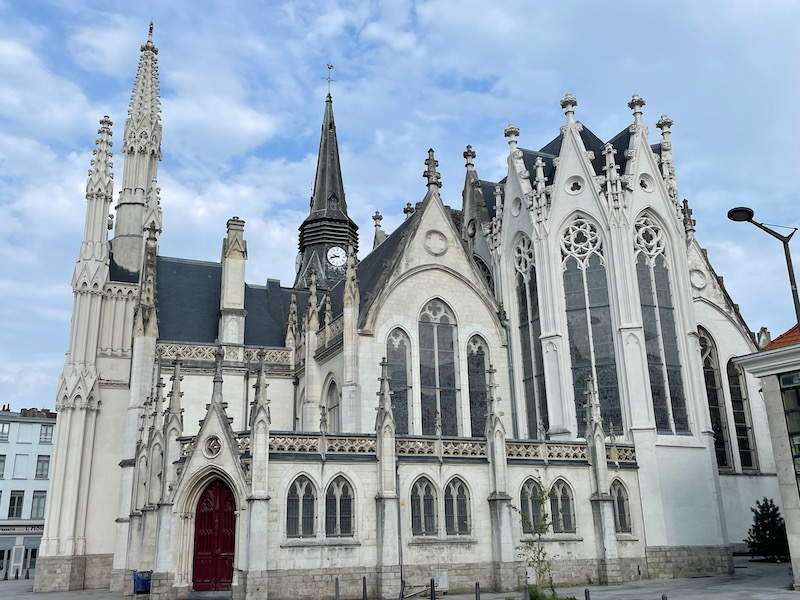
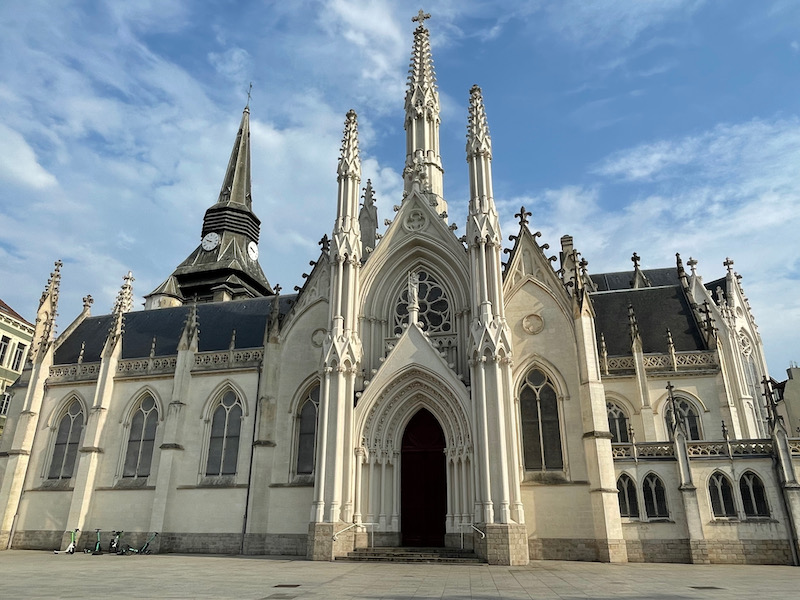
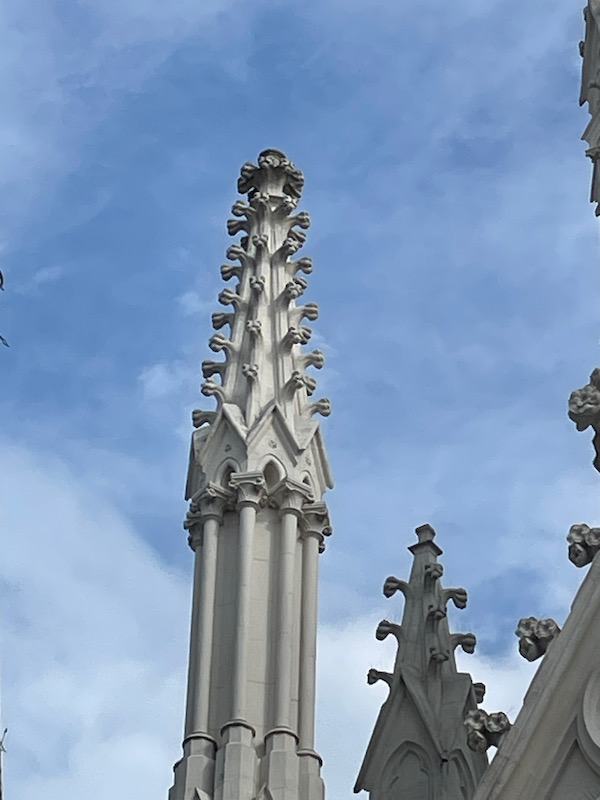
The City Hall was built between 1907 and 1911. The facade contains friezes which presents work, commerce, and textile industries. The facade of the central pavilion has 6 sculpted scenes that represent Harvesting cotton and sheering wool; washing, combing and carding; spinning; weaving; dyeing and finishing; and conditioning. In the center are 2 allegorical statues 5m high showing Abundance (RT) and Peace (LFT), framing the coat of arms of the town.

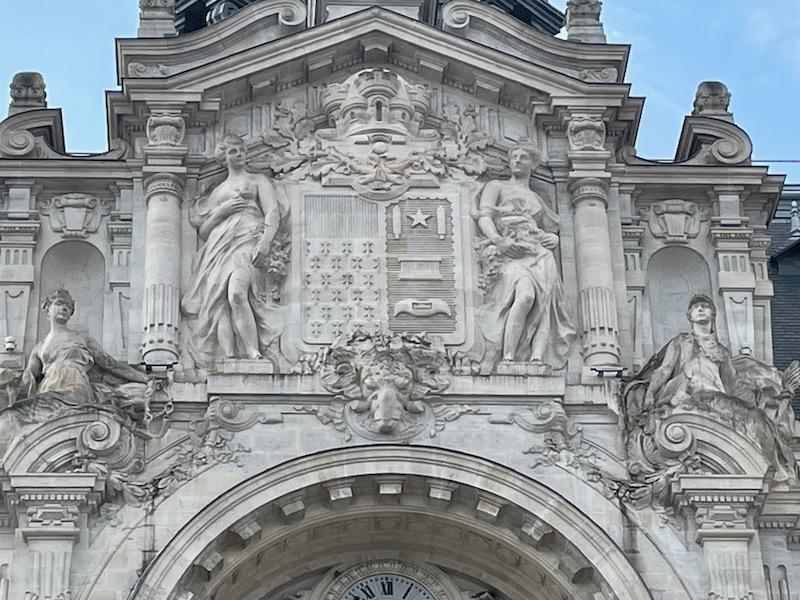
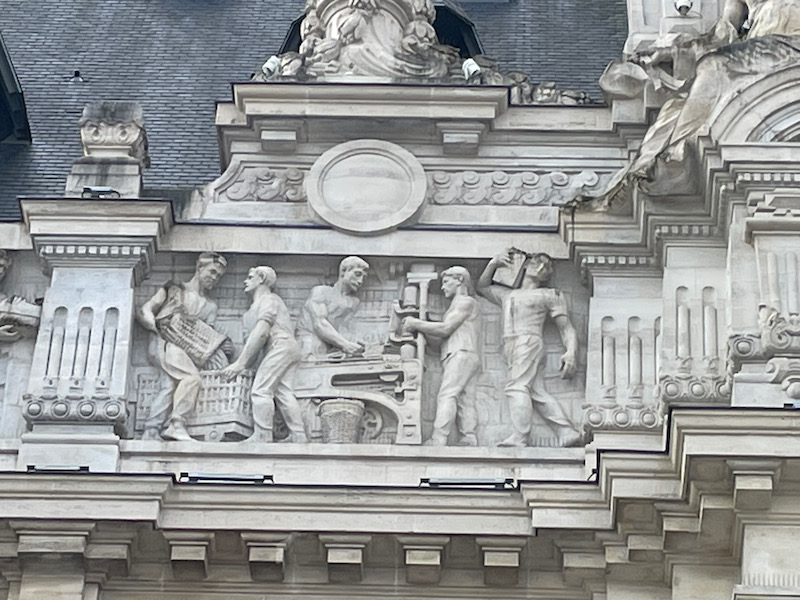
The pavilion on the left, that of the former Chamber of Commerce, is surmounted by a pediment where Mercury, God of commerce, is represented, surrounded by industry, in the form of a woman leaning on a pile of files, and of commerce, in the form of a woman clutching a cornucopia.
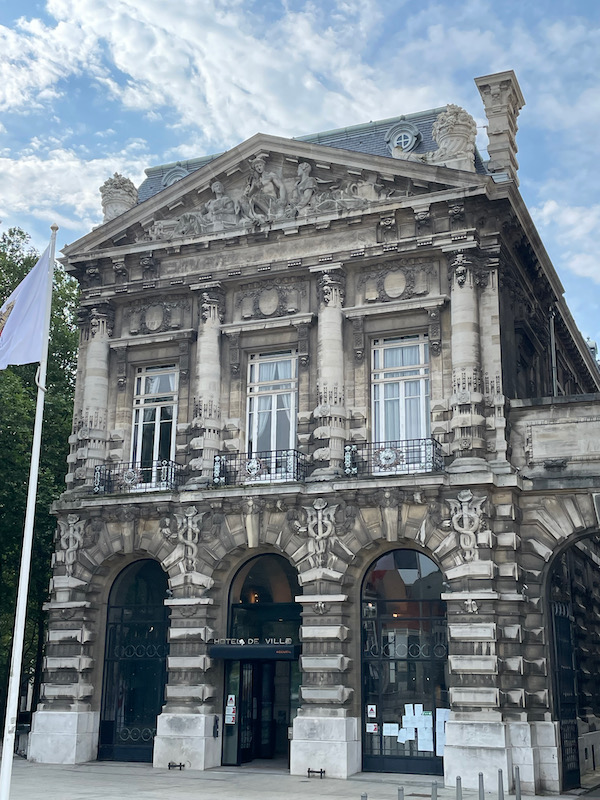
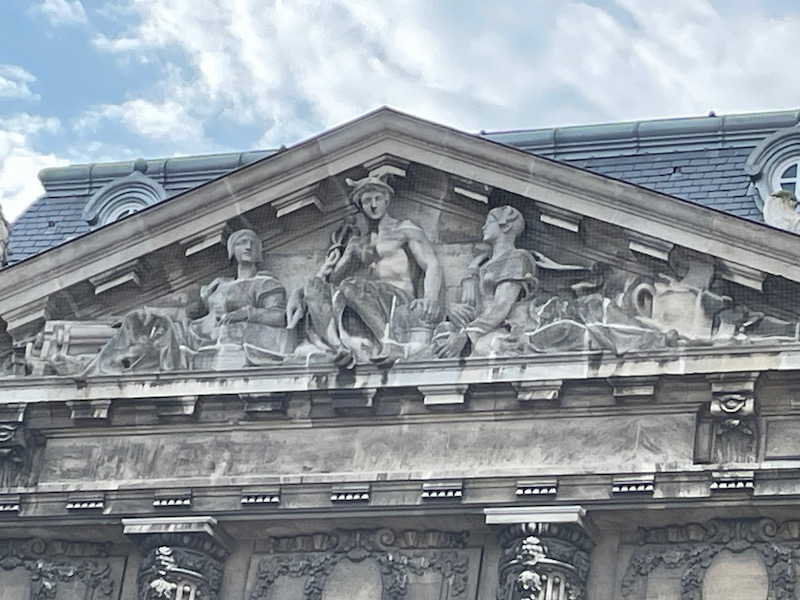
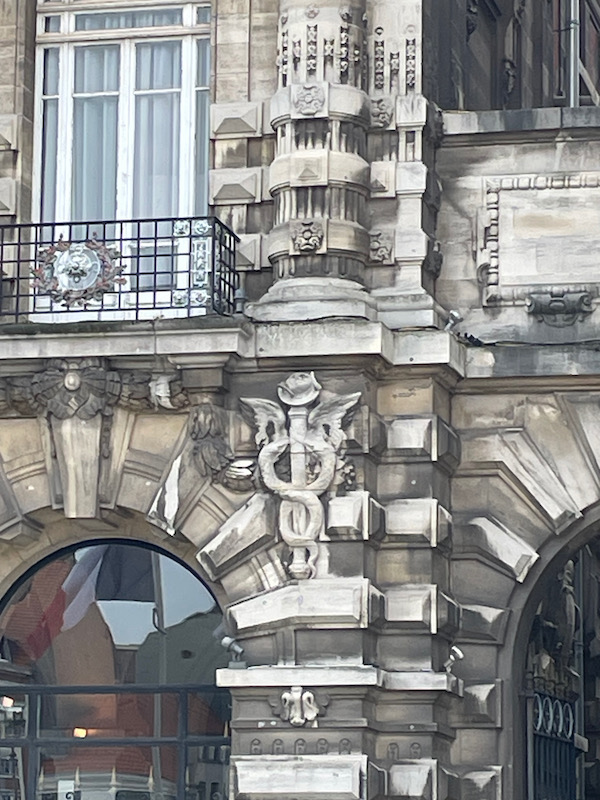
The pediment of the pavilion on the right, that of municipal services, bears an old man seated next to a ram and a woman seated next to a jar, which frame a beehive. A Latin motto overlooks these sculptures: Pax Labor (Peace and Work).
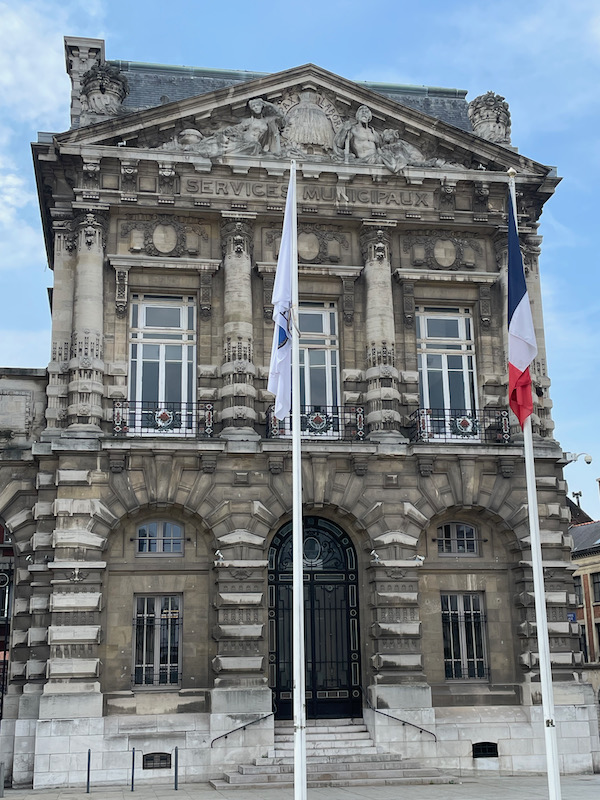
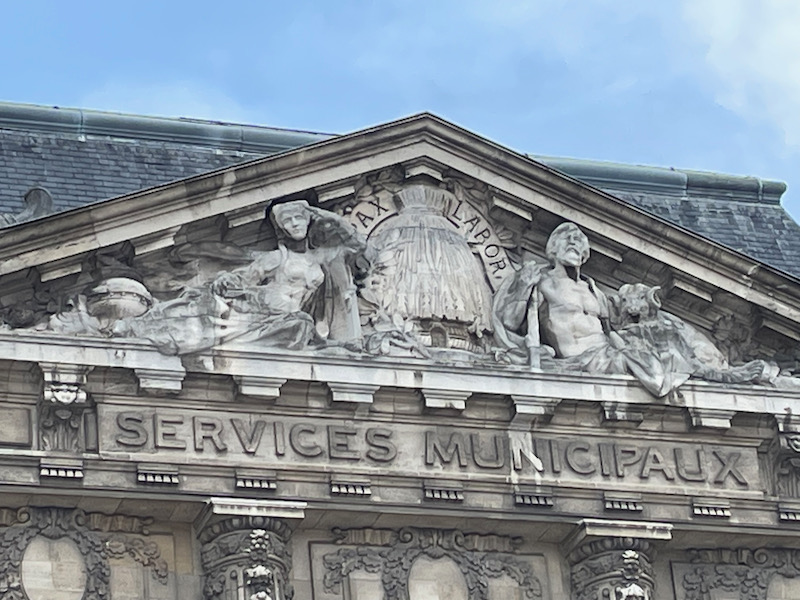
We then walked up Boulevard du Général-de-Gaulle for a couple blocks to see a collection of bourgeois houses, some of them dating to the late 1800's.
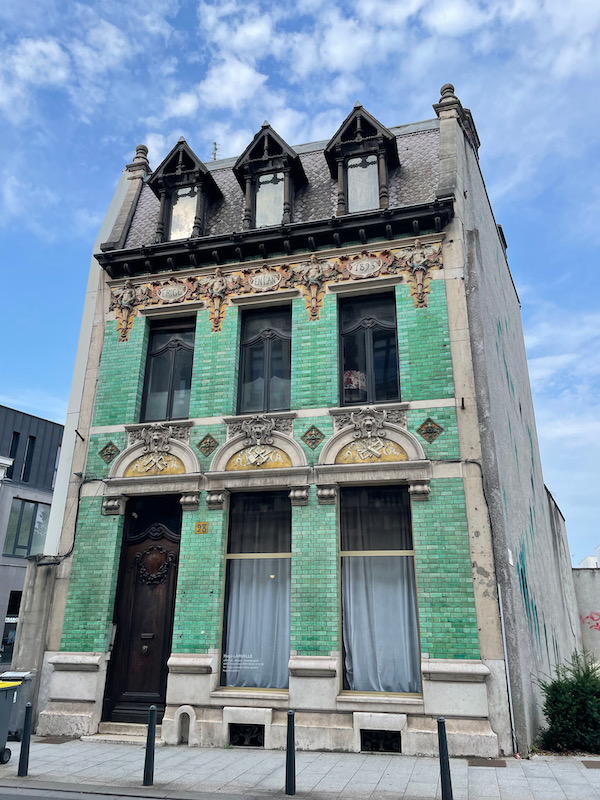
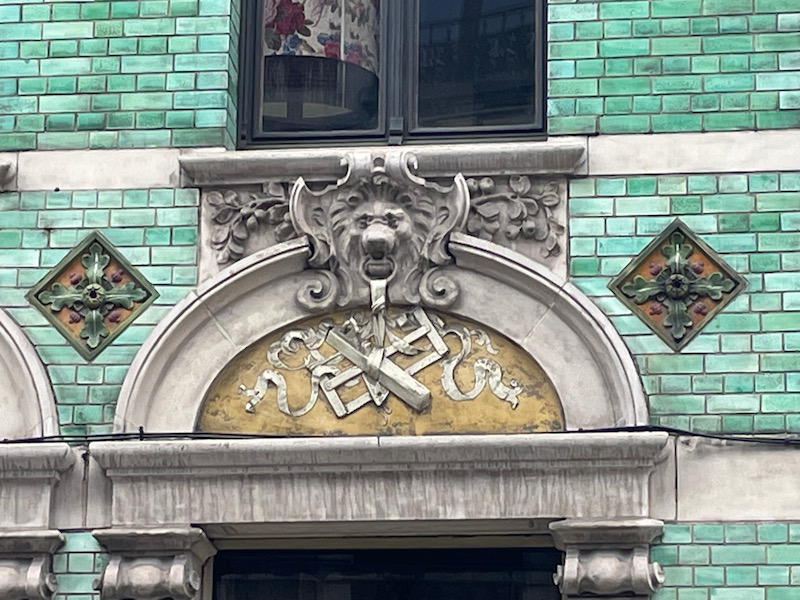
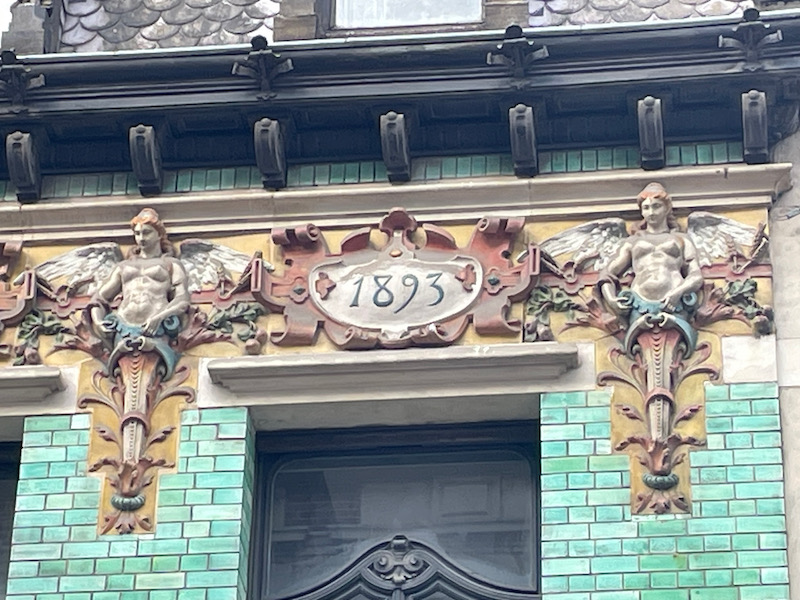
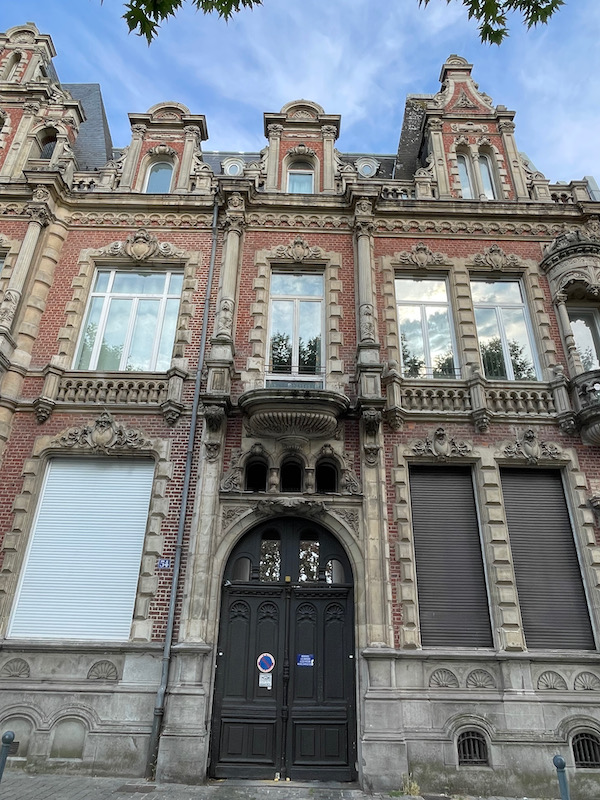
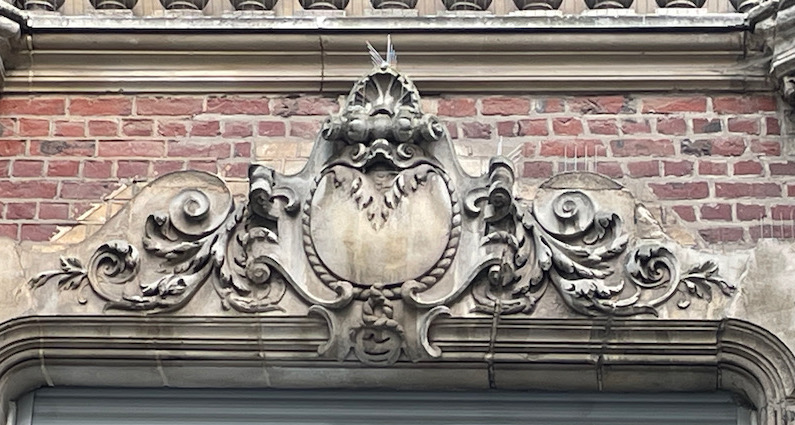
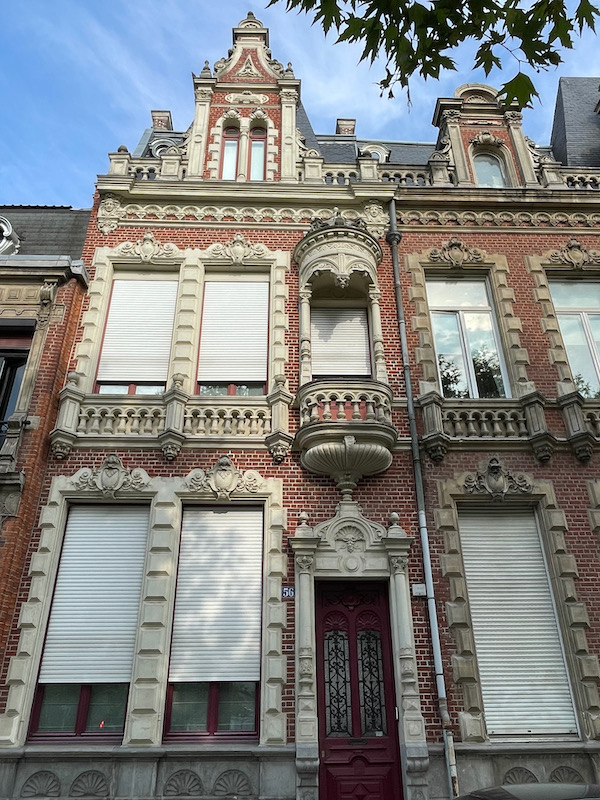
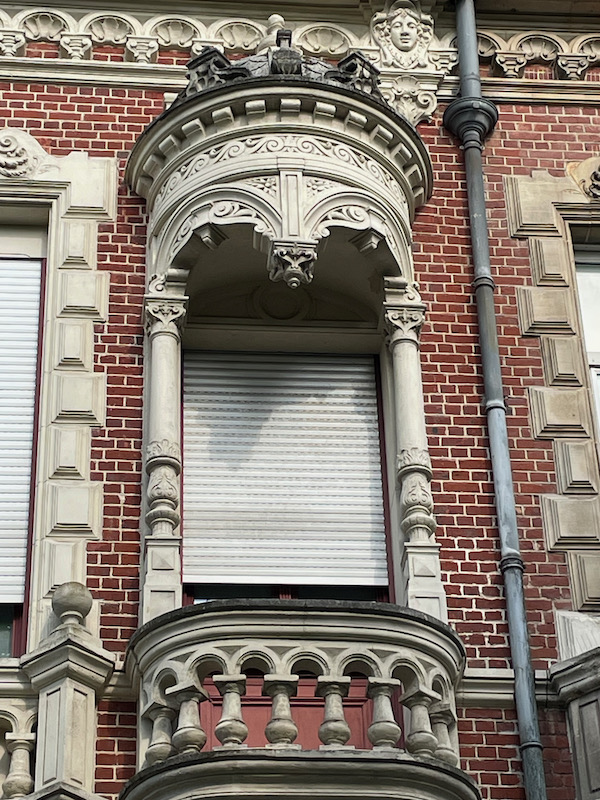
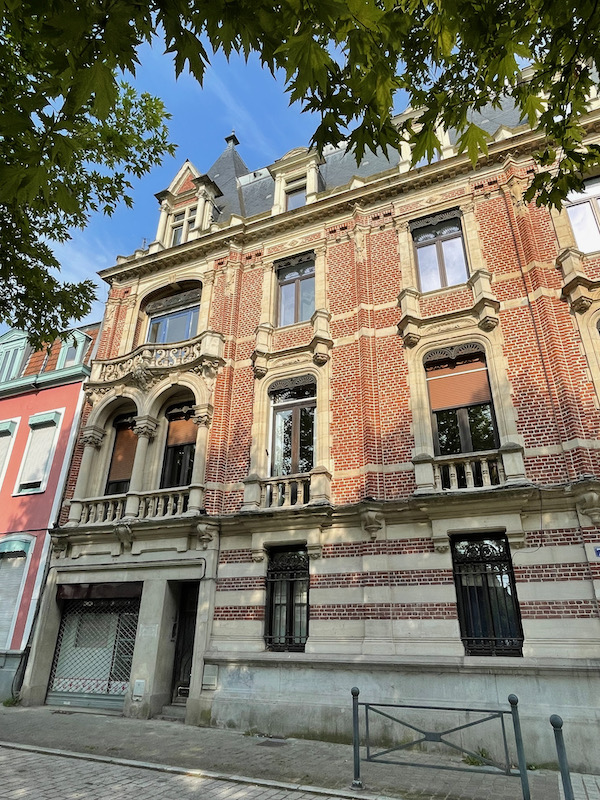
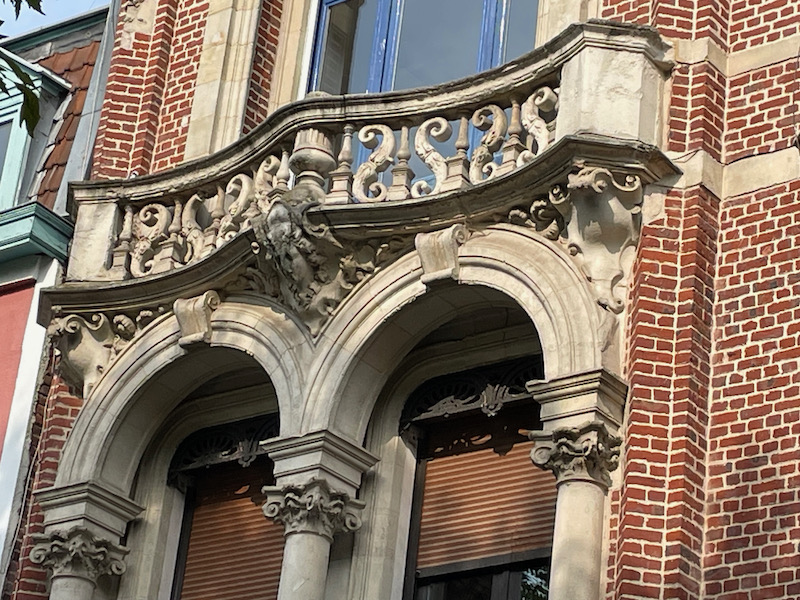
This is a private Catholic middle school with some very impressive decorative brickwork across the top.
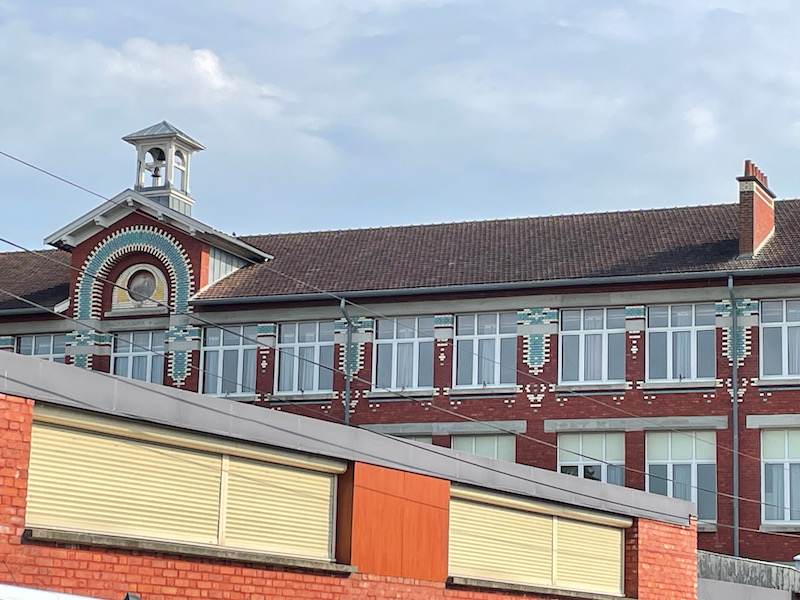
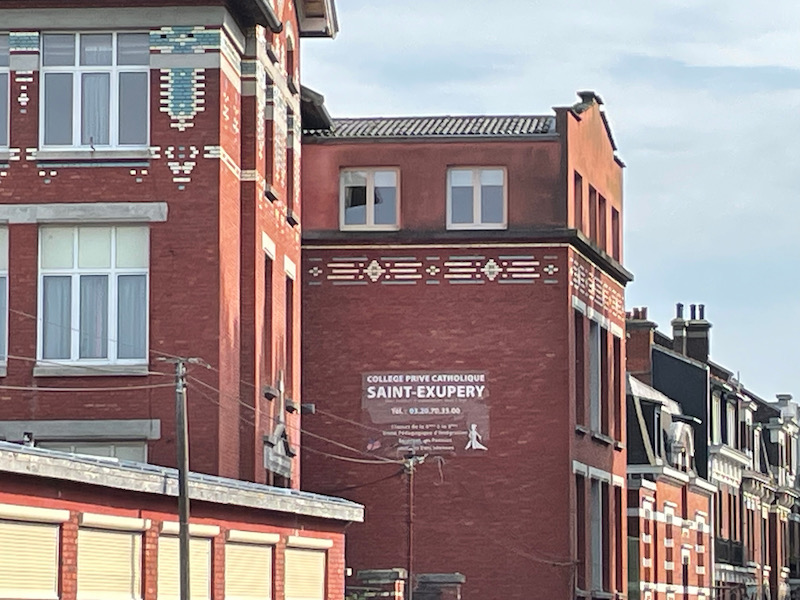
Here is one of those remaining chimneys.
